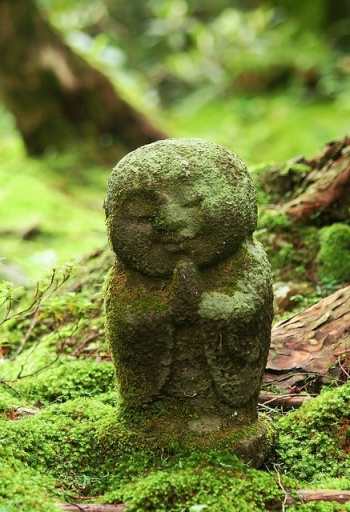When I was a child, my father died in a car accident. I learned about loss from an early age, that it could be both painful and joyful. I was blessed with a mother who taught me how to take care of suffering and to express my emotions from a young age. It has served me well throughout my life. It taught me about living fully. I am so grateful to have received this lesson on impermanence so early on in life.
In the Satipattana Sutta (The Foundations of Mindfulness) the Buddha taught the charnal ground contemplations – the practice of looking at dead bodies decaying, part of the practices of mindfulness of the body. We don't have many charnal grounds today so viewing decaying human bodies is not so easy to do. In the modern world we are so cut off from death. We try to avoid it. Yet awareness of death can bring such an appreciation for life. I like the charnal ground contemplations because I like to keep death close.
I practice the charnal ground contemplations every time I pass a dead animal on the road. I try to stop and really look. I take a moment to wish wellness to the animal and whoever killed the animal. Then I say, “Soon, this body too. Soon, this body too.” This body will also die and decay. I'm not so different from the animal lying at the side of the road. And right now, I 'm alive. What a blessing!
When my mother died three years ago, I went back and forth between the pain of letting go of the most important person in my life and deep sense of gratitude to get to be so close to death. Three months after her initial diagnosis, the cancer had eaten away at her body and a stroke had left her in a coma. I spent 10 days with her in the Hospice as her body slowly shut down. It was fascinating to learn that the body could survive for so long without food or water, that even unconscious I could feel completely connected to my mother and that something so dreaded could be both painful and exquisitely beautiful at the same time.
I practiced a lot of mindful walking and breathing to stay present with the joy and to release the sorrow. I also practiced the charnal ground contemplations, taking time to examine her hands and feet as they turned blue and purple and other physical systems shutting down. When the death actually happened, my meditation was to witness the miracle in front of me. Her breathing stopped, a smile appeared on her lips and love filled the room. The day after she died, I spent time again with the body to touch it and to feel the coldness, to rest my head on the chest and to hear the non-heartbeat. My brain raced about asking, “How?” over and over again. I continued to breathe, keeping death close.
There was plenty of sorrow after the death. At first it was sharp, like a thousand knives piercing through my heart. It was exhausting. There was no energy to contemplate the Dharma. I could only breathe, be gentle, nourish joy when it emerged and soften around the pain. And over time, it faded. Now, the bits of grief that float up are gentle. They come slowly so I can see them. Memory of mom. Sadness arising. Releasing sadness. Cultivating gratitude. The habit to go from memory to sadness is instinctual and natural. And like all habits, it can be transformed. It's being transformed.
The day before the 3-year anniversary of my mother's death brought another occasion to practice the charnal ground contemplations. One of the monks here died. He was 76. Not so young and not so old. He'd been sick for a while, though the heart attack came as a surprise. He went quickly and peacefully. Seeing his body laid out, lips almost smiling, body not breathing though I kept expecting the chest to rise and fall, ears turning blue… It reminded me so much of being with my mother. It was so tender, so beautiful. I felt truly happy for him and I thanked him for sharing his death with us.
Being there, I remembered that while my mother was leaving her body, her right side was shut down from the stroke so every visitor that came sat on her left side to talk to her and hold her hand. As the other hand and feet started changing colour, her left hand remained it's normal colour. Even the day after she died, her left hand hadn't changed at all. It was as much a lesson in life as it was in death, two sides of the same coin.















